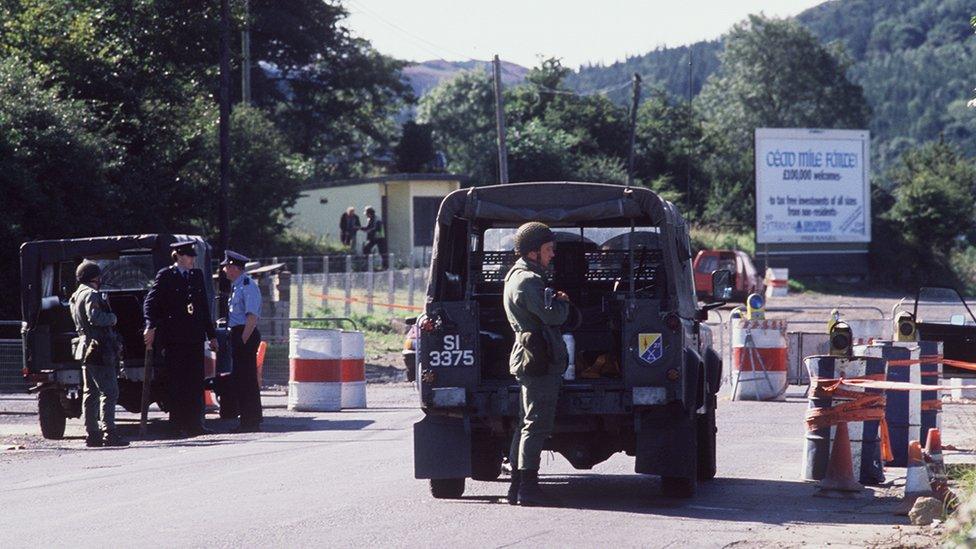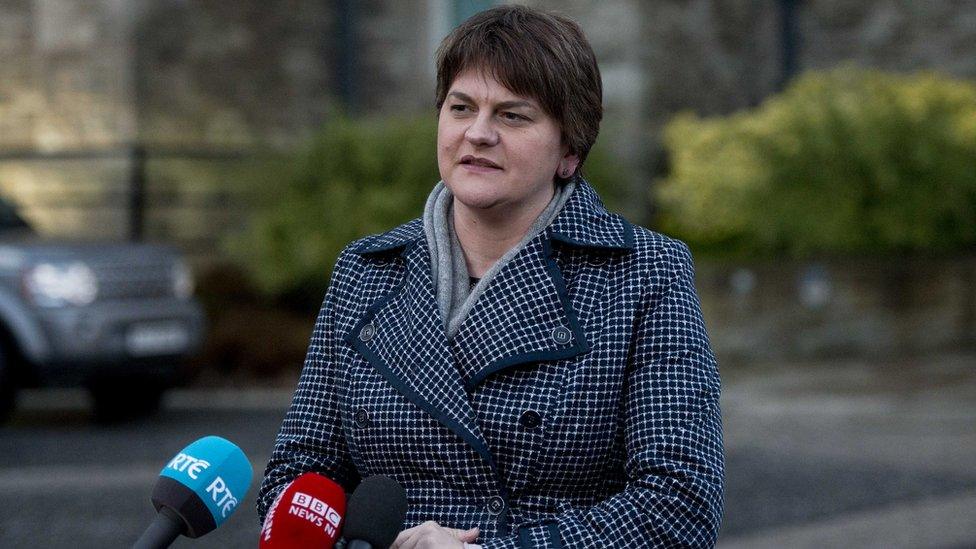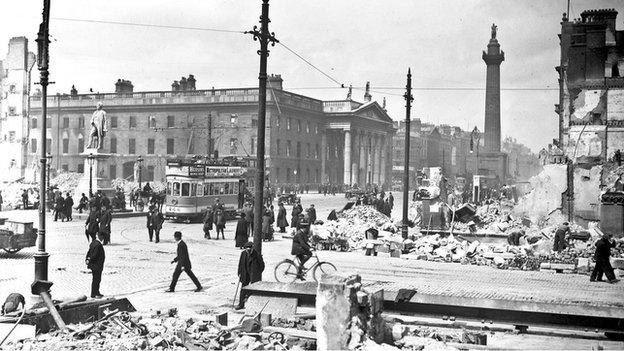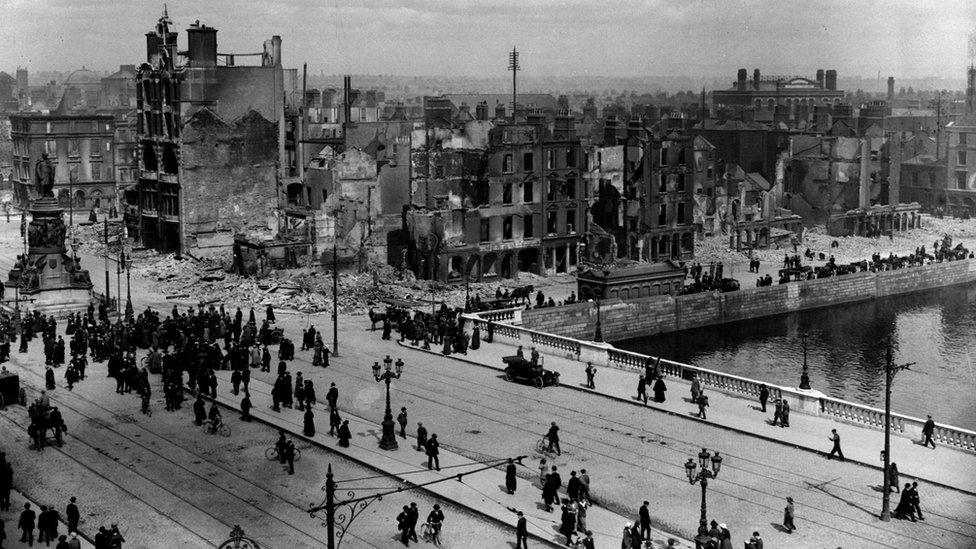Evolving question of Irish border
- Published

Border checkpoints like this Irish army one in Killeen are now a thing of the past
The Irish border has been one of the most contentious international frontiers in the last century, but these days, you might not even notice that it is there.
Belcoo in County Fermanagh and Blacklion in County Cavan are neighbouring rural villages, separated by a bridge over a river.
But they're in different countries.
As you walk across the bridge, there isn't a customs house, barrier or passport check in sight.
The only hint that you've left the United Kingdom and arrived in the Republic of Ireland is that the speed limit sign is in kilometres per hour rather than miles.
The near invisibility of the border is one of the products of the Northern Ireland peace process.
Villagers on both sides remember heavy security and checkpoints on the bridge, during dangerous times.
However, now they all say it doesn't feel like there's an international border between them.
When it comes to the central question of politics throughout Northern Ireland's history - whether the red line on the map should be removed, and Ireland be united - they're not particularly exercised.
The consensus seems to be along the lines of: "It might happen some time - but I can't see it happening at the moment".
Fresh examination
The centenary of the Easter Rising has generated a fresh examination of where Ireland has arrived as a nation and of what future direction unionism and nationalism may take.
The rebellion ultimately sparked what's known in Ireland as the War of Independence.
In 1921, the Anglo-Irish Treaty allowed the southern 26 counties of Ireland to leave the UK.
But the six counties of Northern Ireland remained British - a difficult compromise for Irish republicans.
Various groups today will lay claim to have the most valid republican credentials.

Sinn Féin's Pearse Doherty, seen here with Martin McGuinness, said he had no doubt there would be a united Ireland in his lifetime
And the republican strategy has changed significantly after the end of the Troubles.
Sinn Féin are unusual, if not unique, in being a political party that operates in two different countries.
Of course, this is not how they view things.
It has been the second biggest party in Stormont for more than a decade, holding four ministerial positions including deputy first minister.
But in the Republic, it has had a steady electoral advance too.
In 1997, it won its first seat in the Irish parliament or Dáil in the modern era.
In the last general election, it returned 23 TDs (MPs) - making it the third largest party.
The aim is to be in government on both sides of the border - a key aspect of its united Ireland project.
Although it has been linked to the IRA - a new generation of politicians is emerging in Sinn Fein who have no association with the conflict.
Pearse Doherty, 38, is their finance spokesperson in the Dáil.
He says he has "no doubt" that he will live to see a united Ireland.
He said there needs to be discussion about the "nuts and bolts" of how it would happen - for example, how public services, employment regulations and the energy market would work.
"We need to have a plan for halfway to reunification. There is an old notion of a United Ireland that is about the 6 joining the 26. But that's not the notion that Sinn Féin supports. It's about creating a new Ireland," he said.
Under the terms of the Good Friday Agreement in 1998, there can be no change to the status of Northern Ireland unless a majority of people on both sides of the border vote for it.

DUP leader Arlene Foster said the union has never been so secure
Sinn Féin is calling for a "border poll" if the UK votes to leave the EU.
But unionists are looking beyond the border in a different way to nationalists - they will argue that the constitutional question is settled, and that the debate over the border has pretty much gone.
They will point to surveys such as that commissioned by the BBC and the RTÉ state broadcaster last year, which found that only 13% of people in Northern Ireland wanted a united Ireland in the short to medium term.
'Huge irony'
Northern Ireland First Minister, DUP leader Arlene Foster, said: "All the opinion polls and indeed the census show that people are content with the constitutional position of Northern Ireland.
"There is a huge irony that here we are in 2016, which for a long time was used by republicans as the date by which they wanted to see unification happen - and instead what they have is a Northern Ireland more secure in the union than it has ever been in my lifetime."
Surveys also indicate that more Catholics are in favour of the status quo than not - and that there is a growing recognition that people regard themselves as "Northern Irish", rather than "Irish" or "British".
This hint of a developing hybrid political identity, which transcends notions of Britishness and Irishness, is a subtle but significant shift.
Mrs Foster suggests it may be important for unionism in the years ahead: "To be a strong Northern Irish person certainly fits in with my vision of being a unionist within the UK."
Young nationalists see a united Ireland as being a long-term aim - and speak of a need to persuade unionists that they would be better off without the border.
At 32, Colum Eastwood is already the leader of the Social Democratic and Labour Party (SDLP).
It was the strongest Irish nationalist party in Northern Ireland for the last few decades of the 20th century - but has been overtaken by Sinn Féin.
Mr Eastwood says that encouraging Irish united is a "big priority" for him: "I believe that a united Ireland is the biggest and best idea around.
"But my view very clearly is that that cannot happen unless we make Northern Ireland work first."
He thinks that nationalists should not talk of Northern Ireland as a "failed political entity".
On economic matters, he maintains that the border has been "a huge disadvantage", particularly in border areas - including the city of Londonderry, where he lives.
Many nationalists admit that the economic case for Irish unity hasn't been prominent enough, lost in the harsh rhetoric of the conflict.

SDLP leader Colum Eastwood said the border had been a huge disadvantage economically
One of the legacies of the Troubles is that Northern Ireland remains heavily reliant on the public sector and subsidies from the UK Exchequer.
Economist Dr Edgar Morgenroth, from the Economic and Social Research Institute in Dublin, points out that in Northern Ireland public expenditure accounts for about 62% of GDP - in the Republic the figure is 42%.
He says that the Republic would have to find a way of bearing that financial burden if it took on Northern Ireland: "If one were to opt for a larger public service, then one does have to tax more heavily.
"Reunification would imply in fiscal terms taking on a region that is poorer than the poorest part of the Republic of Ireland."
For now, such scenarios remain purely hypothetical.
A hundred years after the Easter Rising, the "Irish Question" isn't being asked as loudly as it was.
What we have is an Irish version of détente - an absence of tension and violence, and in its place argument and debate.
For many, on both sides, that represents the real progress.
Ireland: Looking Beyond the Border is on BBC Radio 4 at 2000 on Monday 28th April.
- Published26 March 2016

- Published23 March 2016

- Published23 March 2016
